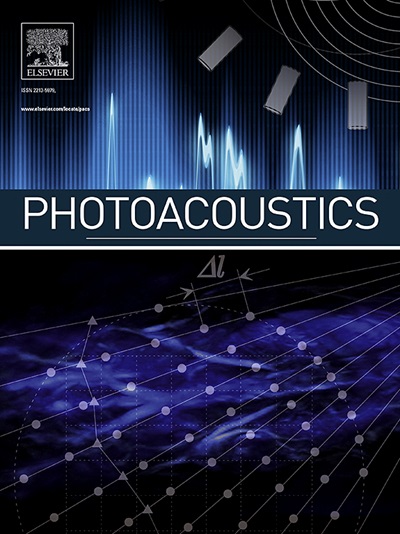Gas concentration prediction in photoacoustic spectroscopy using PSO-EAP-CNN to address correlation degradation
IF 7.1
1区 医学
Q1 ENGINEERING, BIOMEDICAL
引用次数: 0
Abstract
Photoacoustic spectroscopy (PAS) gas detection is frequently compromised by noise-induced correlation degradation, which significantly impacts measurement accuracy. To mitigate this issue, an advanced convolutional neural network (CNN) architecture, termed PSO-EAP-CNN, is proposed, which combines particle swarm optimization (PSO) with an ensemble augmented prediction (EAP) strategy. The proposed framework employs a multi-scale feature extraction mechanism through its convolutional architecture, while simultaneously optimizing network parameters via PSO, thereby achieving accelerated convergence and improved prediction stability. The incorporation of the EAP strategy further enhances the model's robustness and generalization ability under noisy conditions. Experimental results demonstrate significant improvements: compared to baseline CNN, PSO-EAP-CNN reduces MAE by 43.76 %, RMSE by 39.25 %, and MAPE by 51.15 %; compared to ordinary least squares regression, improvements reach 68.55 %, 67.43 %, and 75.21 % respectively. The model runs in only 10 seconds per execution. This work advances PAS-based gas detection, offering enhanced accuracy and noise resilience for practical trace gas analysis.
利用PSO-EAP-CNN解决相关退化的光声光谱气体浓度预测
光声光谱(PAS)气体检测经常受到噪声引起的相关退化的影响,这严重影响了测量精度。为了解决这一问题,提出了一种先进的卷积神经网络(CNN)架构,称为PSO-EAP-CNN,该架构将粒子群优化(PSO)与集成增强预测(EAP)策略相结合。该框架通过其卷积架构采用多尺度特征提取机制,同时通过粒子群算法对网络参数进行优化,从而加快了收敛速度,提高了预测稳定性。EAP策略的引入进一步增强了模型在噪声条件下的鲁棒性和泛化能力。实验结果表明,与基线CNN相比,PSO-EAP-CNN将MAE降低43.76 %,RMSE降低39.25 %,MAPE降低51.15 %;与普通最小二乘回归相比,改进率分别达到68.55 %、67.43 %和75.21 %。该模型每次执行只需10 秒。这项工作推进了基于pas的气体检测,为实际痕量气体分析提供了更高的准确性和抗噪声能力。
本文章由计算机程序翻译,如有差异,请以英文原文为准。
求助全文
约1分钟内获得全文
求助全文
来源期刊

Photoacoustics
Physics and Astronomy-Atomic and Molecular Physics, and Optics
CiteScore
11.40
自引率
16.50%
发文量
96
审稿时长
53 days
期刊介绍:
The open access Photoacoustics journal (PACS) aims to publish original research and review contributions in the field of photoacoustics-optoacoustics-thermoacoustics. This field utilizes acoustical and ultrasonic phenomena excited by electromagnetic radiation for the detection, visualization, and characterization of various materials and biological tissues, including living organisms.
Recent advancements in laser technologies, ultrasound detection approaches, inverse theory, and fast reconstruction algorithms have greatly supported the rapid progress in this field. The unique contrast provided by molecular absorption in photoacoustic-optoacoustic-thermoacoustic methods has allowed for addressing unmet biological and medical needs such as pre-clinical research, clinical imaging of vasculature, tissue and disease physiology, drug efficacy, surgery guidance, and therapy monitoring.
Applications of this field encompass a wide range of medical imaging and sensing applications, including cancer, vascular diseases, brain neurophysiology, ophthalmology, and diabetes. Moreover, photoacoustics-optoacoustics-thermoacoustics is a multidisciplinary field, with contributions from chemistry and nanotechnology, where novel materials such as biodegradable nanoparticles, organic dyes, targeted agents, theranostic probes, and genetically expressed markers are being actively developed.
These advanced materials have significantly improved the signal-to-noise ratio and tissue contrast in photoacoustic methods.
 求助内容:
求助内容: 应助结果提醒方式:
应助结果提醒方式:


